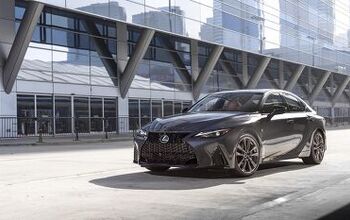NHTSA Investigates Why Kia, Hyundai Airbags Didn't Deploy in Fatal Crashes

The National Highway Traffic Safety Administration has opened a probe into two older-model Kia and Hyundai vehicles in the wake of six head-on collisions, hoping to discover why the vehicles’ airbags failed to deploy.
Included in the investigation is the 2011 Hyundai Sonata and Kia Fortes from the 2012 and 2013 model years. The collisions reported by the safety agency resulted in four deaths and six injuries.
According to the NHTSA, each collision caused significant damage to the vehicle, and should have led to front airbag deployment. This didn’t happen. The agency received the accident reports between 2012 and 2017.
Four of the collisions occurred in 2011 Sonatas sold in the United States, with a 2012 Forte and Canadian-market 2013 model rounding out the group. Naturally, part of the agency’s probe will determine whether airbags in other models might be affected. Some 425,000 vehicles currently fall under the NHTSA probe.
Speaking to Reuters, Hyundai brand spokesman Jim Trainor said the automaker is aware of two fatalities, adding that the head-on collisions occurred at a high rate of speed. The problem seems to exist only in 2011 Sonatas, he said.
Last month, Hyundai issued a recall for 154,753 Sonatas in the U.S. after receiving reports of airbag non-deployment.
“Hyundai indicates that the DIR stemmed from post-collision inspections of the air bag control units (ACUs) showing that an electrical overstress condition (EOS) of an ACU electronic component occurred in three of the crashes, and that the fourth ACU is under evaluation for the same concern,” the NHTSA said in its investigation summary. “Hyundai has not identified a remedy for this recall, and states that the cause of the EOS is being investigated with the ACU supplier, ZF-TRW.”
It’s believed the Forte models are equipped with the same ACUs.
[Image: Hyundai]

More by Steph Willems
Latest Car Reviews
Read moreLatest Product Reviews
Read moreRecent Comments
- Jeff Self driving cars are not ready for prime time.
- Lichtronamo Watch as the non-us based automakers shift more production to Mexico in the future.
- 28-Cars-Later " Electrek recently dug around in Tesla’s online parts catalog and found that the windshield costs a whopping $1,900 to replace.To be fair, that’s around what a Mercedes S-Class or Rivian windshield costs, but the Tesla’s glass is unique because of its shape. It’s also worth noting that most insurance plans have glass replacement options that can make the repair a low- or zero-cost issue. "Now I understand why my insurance is so high despite no claims for years and about 7,500 annual miles between three cars.
- AMcA My theory is that that when the Big 3 gave away the store to the UAW in the last contract, there was a side deal in which the UAW promised to go after the non-organized transplant plants. Even the UAW understands that if the wage differential gets too high it's gonna kill the golden goose.
- MKizzy Why else does range matter? Because in the EV advocate's dream scenario of a post-ICE future, the average multi-car household will find itself with more EVs in their garages and driveways than places to plug them in or the capacity to charge then all at once without significant electrical upgrades. Unless each vehicle has enough range to allow for multiple days without plugging in, fighting over charging access in multi-EV households will be right up there with finances for causes of domestic strife.


































Comments
Join the conversation
Wait a minute now... I thought the Koreans were the NKOTB as far as quality and hitting the mark on what consumers want in a car. You mean buyers want to survive crashes too? Back to the drawing board...
At least that great warranty will replace the airbags. A long warranty makes a car reliable, right?